Unveiling the Architectural Marvel: Exploring the Magnificent Structure of the Great Wall
The Great Wall of China is an amazing subject. Despite its popularity and historical significance, we actually know very little about the Great Wall of China structure. While many believe the Wall starts at Shanhaiguan and ends at Jiayuguan, it actually stretches across a dozen provinces, even reaching Qinghai and Heilongjiang. Additionally, while we often picture the Great Wall as being made of bricks, only 1% of the wall is actually constructed in this way. Finally, despite popular belief that the wall was a site of many battles, few were fought along its length.
In this article, we will delve into the what type of structure is the Great Wall of China, its impressive construction techniques, and breathtaking beauty of the basic structure of the Great Wall of China.
What Type of structure is the Great Wall of China?
The Great Wall, one of the types of ancient Chinese architecture, is a very long walled defence structure. It is regarded as one of the great wonders in the history of ancient human architecture. It consists of walls, citadels, battlements, village forts, passes and beacon towers. The Great Wall is a collective name for the massive military projects built in different periods of ancient China to defend against the invasion of nomadic tribal alliances in the northern part of the country.
The Length and Width
How long is the Great Wall of China?
The Great Wall spans a vast number of areas and has been built and expanded upon throughout the ages. Its statistics are truly mind-boggling. It wasn't until 2012 that we learned of its length - 21,196.18 kilometers - through professional measurements.
To put it into perspective, if you were to build a wall straight from the South Pole to the North Pole of the Earth, the Great Wall would be slightly longer than that wall.
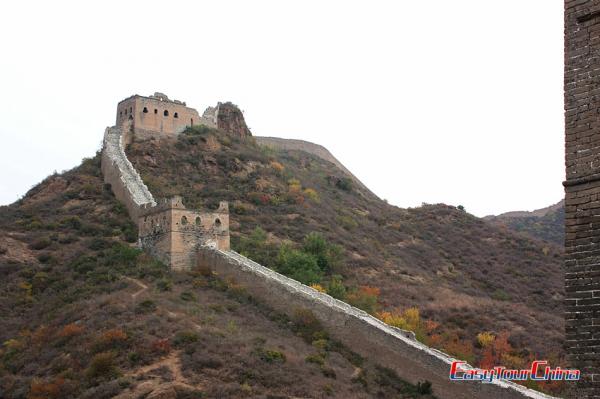
How wide is the Great Wall of China?
The Great Wall at Badaling, for example, is no wider than a road. Therefore, the rumor that the Great Wall is the only man-made object on the moon visible to the naked eye is false.
Is the Great Wall of China the biggest man-made structure?
To be more precise, at 21,196.18 kilometres in length, the Great Wall is the longest man-made structure in the world.In addition, calculated from the materials used in its construction, the Great Wall weighs 52.6 billion kilograms, making it the single most massive structure ever built by human civilisation.
Is the Great Wall of China a Continuous Structure?
You may have heard that the Great Wall is not a continuous military defence project. Instead, it consists of a number of segments of varying lengths spread over different areas. The largest section is over 8,000 kilometers long. And, these walls were built during different dynasties. Between the walls there are fortifications as well as natural barriers such as mountains. Over time, more and more walls and fortifications were connected, gradually forming a more complete and unified defence system.
Keep reading: How Tall and How Big is the Great Wall of China?
Essential Great Wall of China Structures
The Wall & the Enemy Towers
The Great Wall's main architectural elements are the wall and the enemy towers, which are also its highlights. The wall's form varies depending on the mountainous terrain, while the most common type of enemy tower is the hollow brick vaulted tower. As the saying goes, "the wall was a platform with a spleen that looked askance at the four sides, the platform was five feet high, with three levels in the void, the platform housed a hundred men and was equipped with armour and clothes and food."Beacon Towers
Beacon towers are pier-shaped buildings constructed on the borderlines to transmit information about warfare. They were first developed during the Warring States period and were further formed in the Qin and Han dynasties. Beacon towers were widely distributed and located next to each other to monitor the enemy situation at all times and to transmit information quickly.In the Ming Dynasty, the beacon towers were called Smoke Piers and were built on peaks, high hills, or locations with clear visibility. There are types of beacon towers on both sides of the Great Wall of China, including "fire piers outside the Great Wall" and "fire piers in the hinterland", which connected to the mainland.
There aren't as many beacons as one might expect. Too many beacons could be a waste of time and may sometimes misrepresent the enemy. Therefore, they were set up at regular intervals.
![]()
Across the country, there are several beacon sites with different shapes. In above picture, there are four beacons: Santaizi Beacon, built in the fourth year of Ming Longqing with a circular plan; Xianrendao Beacon, built in the thirteenth year of Ming Yongle, with a square plan that is narrow at the top and wide at the bottom; Hami Loudun Beacon, built around the time of Emperor Xuan of Han and perfected in the Tang dynasty; and Kizil Gaha Beacon, built in the Tang dynasty with a depression in the front caused by differentiation of the sandy soil.
The beacon had the following structure:
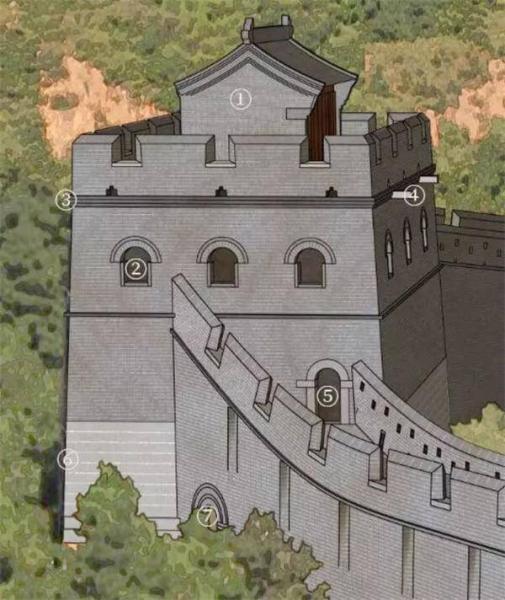
② Arrow windows were used for looking out and firing.
③ The beacon had brick eaves.
④ A spouting spout was also present.
⑤ The coupon door was an entrance.
⑥ There was a podium.
⑦ Additionally, concealed doors were installed in some hidden places on the outside of the border wall. These allowed defending soldiers to unexpectedly appear outside the wall in order to kill the enemy.
The structure of a boundary wall typically includes the following elements:
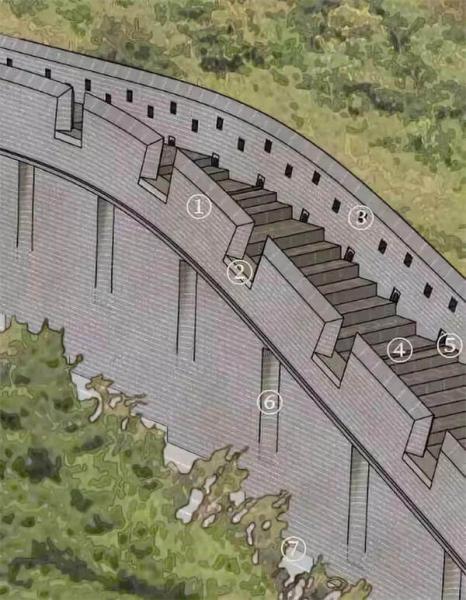
② Battlements with lookout and firing positions.
③ Lookout and shooting holes, which can also be used for firing crossbows and muskets outward.
④ Water stoppers, which direct water out of the wall through a drain.
⑤ Drainage openings.
⑥ Stone chutes, from which stones are thrown down the holes and rolled down to strike the enemy.
⑦ The base of the wall.
>> Explore Best-selling Great Wall of China Tours:
Drainage Structures
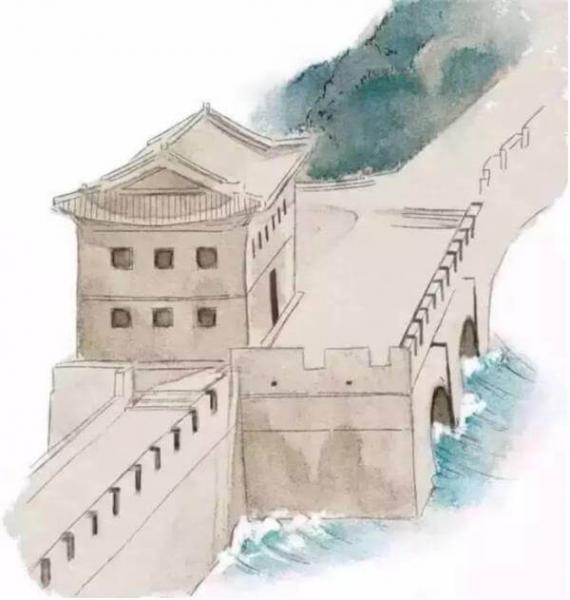
Beasts of Prey
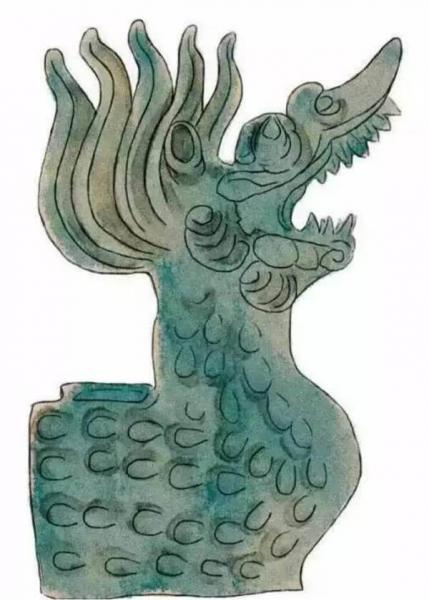
Water Gates
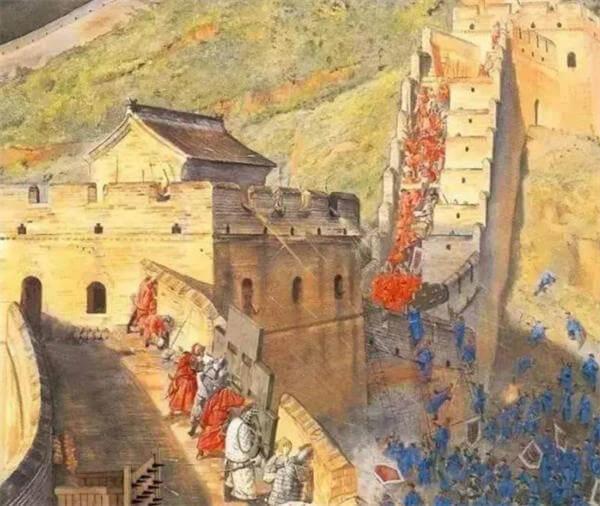
Weapons used to defend the Great Wall
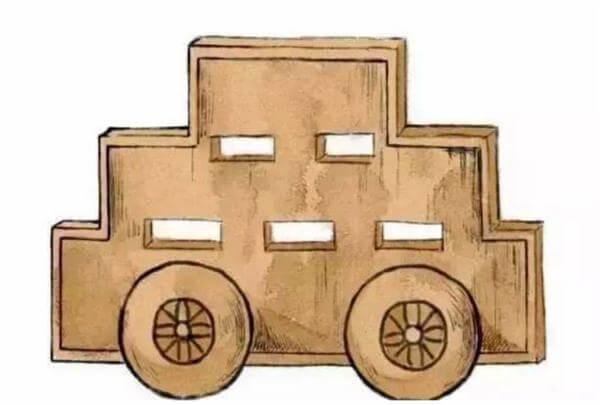
Wooden Head
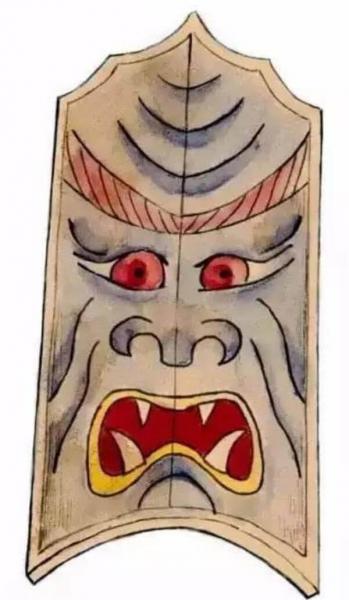
Wooden Standing for Defending the City
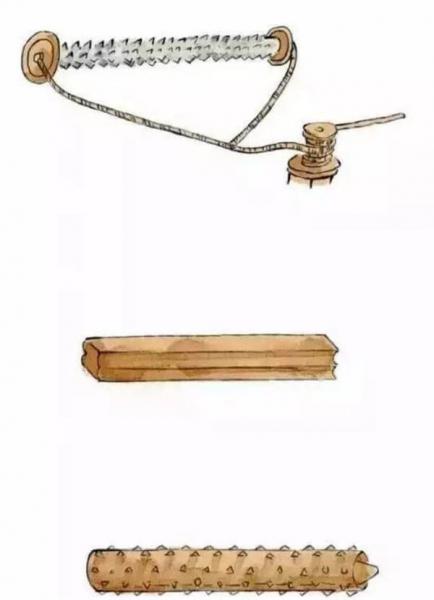
Wooden stands are used for defending the city, along with shields. There are two types of shields, wooden and bamboo, which are usually 5 feet high and 3 feet wide. They are used for patrolling the city and for shielding themselves from enemy fire on enemy buildings. This helps to stop enemy rockets and artillery from causing damage.
>> Explore Best Great Wall of China Tours from Beijing:
What is the Great Wall of China Made of?
When talking about the structure of the Great Wall of China, we shouldn’t forget its construction materials. Many people thought that the Great Wall was entirely made of bricks, but most of the wall was not so "noble." It was only during the Ming Dynasty that the Great Wall was constructed with bricks. In key fortified areas, bricks were used in large quantities due to the significant amount of manpower and resources needed to produce them. The remainder of the Great Wall was primarily constructed with earth, stone, and timber.To Build or Not to Build, That is the Question
The human and material costs of building the Great Wall were very high, regardless of the materials used. However, it was necessary for maintaining the peace of the border. This is why not every dynasty built the Great Wall. The Qin, Han, and Ming dynasties were the largest builders, while the Tang and Qing dynasties largely ignored it.During the early days of the Qin Dynasty, 300,000 civilians were drafted to serve on the Great Wall, causing great public anger and even the legend of "Meng Jiangnv bringing down the Great Wall with tears". Eventually, the Qin dynasty died in the second century. In the face of this dilemma, successive generations have been torn as to whether to build the Great Wall or not. >> Read 5 Most Famous Legends of the Great Wall of China
The Great Wall was an impregnable psychological defense, although a costly one. Without the Great Wall, nomads would have faced few obstacles to their plundering of the borderlands.
Multiple Functions of the Great Wall
The Great Wall's main historical role has not been one of warfare, but of integration and exchange. As early as the Han Dynasty, people from both inside and outside the Great Wall actively traveled between the regions. The Ming Dynasty set up horse markets, but peaceful mutual trade between farmers and herdsmen had already begun earlier. Han merchants sold silk, cotton, rice, and salt, as well as various household items, in exchange for cattle, sheep, horses, and leather products from nomadic merchants.